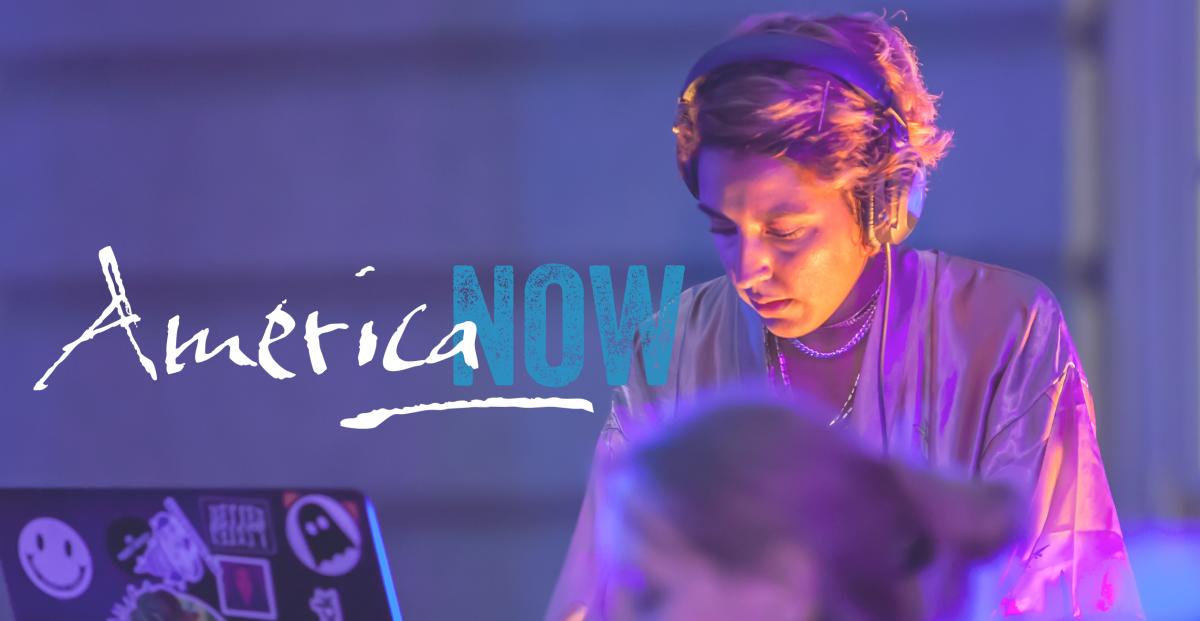Shanti Boyle is an intern with SAAM's Office of External Affairs and Digital Strategies.
America Now is an annual one-day festival that celebrates art and history. This year’s theme, a Celebration of Music, will certainly require harmony between the hosts of the festival: National Museum of American History, Smithsonian American Art Museum, and National Portrait Gallery. On June 22nd, guests can spend the day exploring hip-hop’s effect on American life at the National Museum of American History and conclude the evening at the National Portrait Gallery and the Smithsonian American Art Museum with a free concert.
In this Celebration of Music, hip-hop headlines. A topical and fitting genre to showcase, the festival almost follows a chronology, allowing participants to learn about hip-hop’s national impact and ending with a concert that exemplifies its current state.
It’s strange to think that two art forms as divided as hip-hop and fine art could manifest such profound connections, yet hip-hop has managed to infiltrate the powers that be. When Sean “Diddy” Combs bought artist Kerry James Marshall’s painting Past Times for $21.1 million, it marked the insertion of hip-hop into the mainstream and the genre itself as a culturally estimable force. But hip-hop began as a street-centered art form that described the realities of black people living in poor, urban neighborhoods. Starting as a particulate blend of spoken-word poetry and music, DJ Kool Herc—known as the father of hip-hop—synthesized the genre by incorporating breakbeats and elements of R&B and soul in 1973. The next year, hip-hop pioneer Afrika Bambaataa defined the four elements of hip-hop: DJ'ing, MC'ing, breakdancing, and graffiti art.
Graffiti in particular influenced fine art. Fab 5 Freddy, member of the Brooklyn-based graffiti group the Fabulous 5, is known to have been a collaborator and friend of Jean-Michel Basquiat and Keith Haring. He worked closely with the artists to curate shows that brought hip-hop into the world of fine art as patron and creator. Both Basquiat and Haring produced visceral works (see Basquiat’s Hollywood Africans and Haring’s Crack is Wack) based in graffiti that depicted the struggles of black Africans and black Americans—struggles that hip-hop strives to communicate. Comparatively, hip-hop has assumed art as a vehicle for status, but also the production of music. Jay-Z referenced Basquiat in his freestyle on Kanye West’s “Grammy Family” beat live on Hot 97 in 2006, and Warhol on Lupe Fiasco’s “Pressure” in the same year. Subsequent years in Jay-Z’s career have seen an increase in his use of art for art. His interest was promulgated to the art world with a $4.5 million purchase of a Basquiat painting in 2013, and in an even larger gesticulation of wealth and power, he and Beyoncé filmed a music video at the Louvre in Paris last year.
America Now itself indicates how hip-hop has shaped American society, now taking up well-deserved space within the hallowed halls of museums. For a more comprehensive and in-depth look into hip-hop and the art it has engendered, RSVP for America Now online.



















